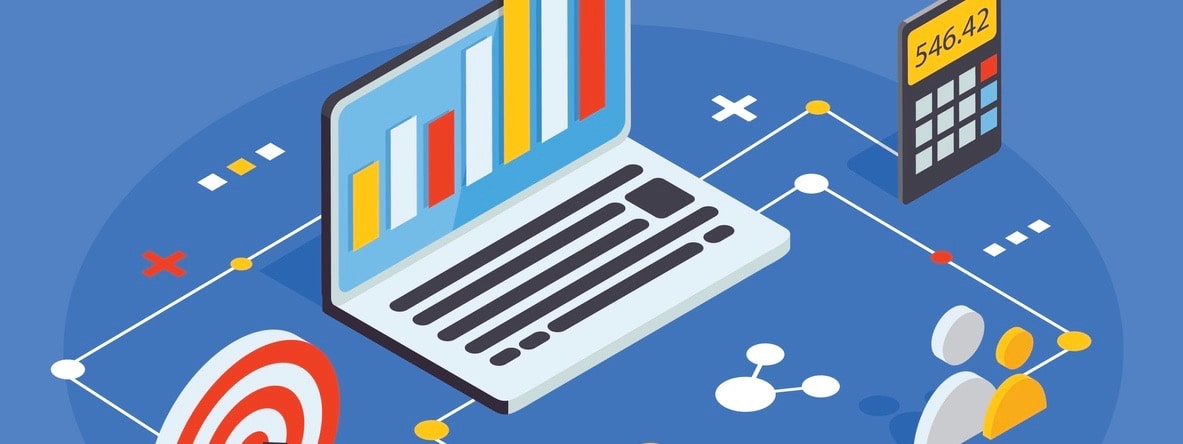Data-driven development has dramatically changed the trajectory of many business industries. A recent market study has shown that companies using a data-driven approach are 23 times more likely to secure new customers. This new approach enables executives to visualize data quality and quantify data outputs to be later used in decision-making. Collected data also helps to extract insights that aid in optimizing workflows and help make better decisions moving forward.
Every business stakeholder is on the lookout for new ways to contribute to any given business’s success. Most companies rely on data to mitigate risks and avoid significant losses. Data has the ability to turn around the performance of your business, provided that you understand the basics in order to utilize valuable data in the most effective way.
With data-driven insights, you can easily understand the direction in which your company is moving and what it may take to succeed. However, you still need to learn many things to enhance the accuracy and efficiency of your strategies and transform your business performance. Stick with this article and learn all the necessary basics about data-driven development.
What is data-driven development?
Data-driven development refers to a software engineering methodology that utilizes data to guide teams throughout the development journey. This strategy is dedicated to teaching company leaders to understand and assess how their respective work contributes to the general success of a given business. The strategy uses a series of KPIs that work together to achieve a particular goal.
Note that this can only be achieved by monitoring certain aspects within the organization, which is critical to the company’s success.
Elements of data-driven development
There are a key series of elements that typically trigger successful data-driven development. Remember that you only need to focus on aspects that align with the company’s vision and mission. This is why you need to understand all the elements of data-driven development. Let’s check them out!
-
The right business KPIs
It’s essential to ensure that you make decisions based on objectives. Ensure that you are dealing with the right metrics relevant to the company’s activities rather than taking a subjective route that is likely to affect the final results of the process. You need to focus on evaluating information that aids in measuring your teams’ contribution to the company’s development.
KPIs including impact, effectiveness, and risk measure are some of the top aspects that you need to consider. These metrics should be monitored constantly and compared with industry benchmarks before making conclusions. When you follow the right KPIs, you are likely to align your work with the company’s long-term strategic objectives.
-
Setting up the right objectives and key results (OKRs)
OKRs tend to be more transitory since they have a clearly defined purpose that spans over a shorter period of time. They can typically remain active for months or sometimes even years. The ultimate goal of the OKRs is to enable the company to deliver, track progress, enhance engagement and ensure that certain goals are perfectly aligned with the company’s mission.
The OKR is meant to describe what the team members aim to achieve. It should contain a single objective and a maximum of five results. The results help team members to measure the extent of their achievements. These metrics can help you to convert opportunities into actions enabling you to achieve your respective goals.
-
Measuring the right metrics
Metrics are vital in monitoring the progress of any business. They can be used to easily assess your team’s efficiency and monitor your business’ progress. Metrics can help you to determine whether your team members are unproductive or elite performers. Considering this process aids in creating a benchmark that can help to add objectivity and standardize relevant definitions.
By measuring the right metrics, you will find it easier to understand your business’s direction in terms of development. Note that well-researched metrics will carry all the essential Information you need to know about the performance of your business. For example, measuring the key metrics instead of vanity ones using social media analytics tools yield results you need.
-
Company vision
It’s essential to ensure that your message is delivered correctly. Data analytics covers a significant role in matters of data-driven development. When presenting this data to the business stakeholders, you need to incorporate data visualization such as a survey chart, scatter plot, and Sankey chart into the process for your audience to understand the message. Not every person understands technical data aspects. Your message should be presented in the right context to avoid complications.
Before presenting your findings, you must ensure that you understand the company’s vision and wider business objectives. Once you get to understand all these crucial aspects, you will find it easier to choose the right KPIs and OKRs to monitor in your strategies.
Benefits of data-driven development
Many people wonder why they should utilize this strategy and implement it in their businesses since they do not understand its benefits. The benefits of data-driven development are evident in every business industry sector. Let’s check them out!
-
It gives access to a mountain of valuable information
When you closely monitor and compare your business data, you are likely to benefit from a clear data view that reflects the general performance of your team members. Learning more about what your team members are doing increases your chances of identifying the areas that require quick fixing. Every business stakeholder requires access to meaningful information that can help them in their daily work.
According to Ben Lack, CEO of Interrupt Media, “quality data has all the necessary information you need to streamline your business operations. Provided that you have the right data at your disposal, you will also have actionable insights that will keep your business moving in the right direction.”
-
Offers visibility into the bigger picture
Visibility is fundamental to the success of any business. The success of your business departments depends on how visible their operations are. This helps you to get a more accurate image of your business operations. You get to see how every team operates and how much they have been able to achieve within a particular time frame.
Remember that every team member needs to account for their work. With a data-driven approach, you can easily evaluate the goals every team member has achieved and what needs to be done to enhance productivity within the company.
-
Setting benchmarks and predicting trends
A data-driven approach aids in evaluating the operational organization of any given company. As a result, this offers visibility into the work delivered, thus creating internal standards for performance and the quality of work completed. With this methodology, your team members can easily understand their respective responsibilities even in a complex setting.
Understanding how the business is performing makes it easier to predict patterns and trends within your industry. This makes it easier to run the business in the right direction as you can ensure that all decisions made will be aligned with the company’s mission. Considering the data you have collected, you can easily set benchmarks that will help you plan for the future.
Conclusion
Data-driven development is a key aspect that can dictate the future of many companies across most industries. Transforming the performance of your business takes time, though provided that you are using the right strategy, a data-driven approach can significantly impact your business growth metrics and enable you to achieve your objectives.
However, data-driven development works hand in hand with data visualization. Note that not every audience will be able to understand technical data reports. You’ll need to break down your data into a simple format that your audience can easily read and comprehend. The goal here is to ensure that all your readers are able to absorb an actionable message from your data.








